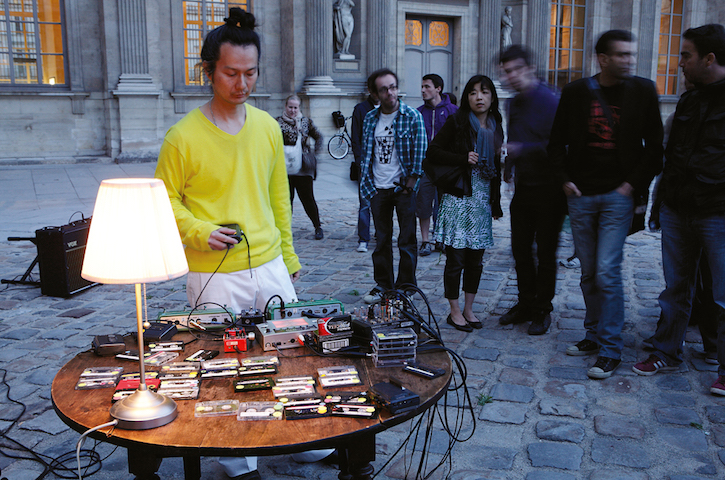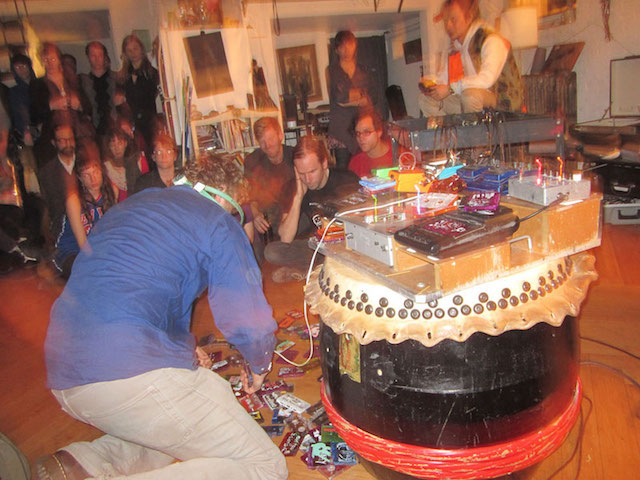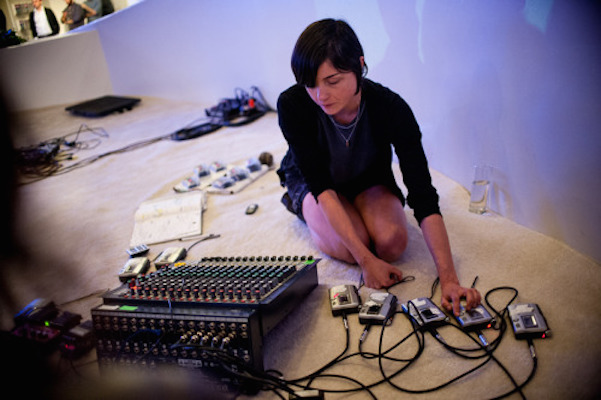3 Artists Utilizing Cassettes As Performance Instruments
While many music consumers may feel that the day of the cassette has come and gone, here we look at three different artists who are cashing in on this antiquated audio format's nostalgic clout and using tapes in their performances.
______________________________
Guest Post by Steph Colbourn on Soundfly's Flypaper
When I was 13 I made a cassette tape for my crush. It was the summer before I was going into grade 9 and, like any preteen and probably any artist, I was too overwhelmed to be able to put feelings into words. Instead I recorded 10 of my favorite songs onto a tape, and interspersed them with my admiration (pretty embarrassing vocal ramblings).
We started dating a few days later.
It was the 90s. CDs were ubiquitously popular, but cassettes had that raw, gritty sound that still seemed to say “I’m outside your window with a boombox.” Since then, things have changed. I’ve had 5 iPods, too many dates, and my current laptop has evolved past even having a CD drive.
Cassettes have become a tool for making music. Relying on their sonic qualities, like those beloved clicks and whirrs, and the clunky, distinctive players that can truly access the most crystalline nostalgic moments, artists have reinvented this medium for playback into a medium for composition. Here are three of my faves…
1. Aki Onda

I first discovered Aki Onda through his essential work in a trio with Michael Snow and Alan Licht. Michael Snow plays a CAT synthesizer and piano, Licht plays a guitar, and Onda stands behind a table playing a series of Walkmans whose recordings move through tube guitar and bass amplifiers. Witnessing these three distinctive artists perform live together, as their textures and gestures effortlessly built on each other, was heartening to say the least.
Onda’s most notable work, Cassette Memories is self-described as a “ritualistic diary” — taking two decades of atmospheres, conversations, and music from his personal daily life and transforming them into site-specific performance. The locations are both surprising and perfect — from an abandoned factory to in front of the Louvre. His memories move through these spaces and audiences, as they collide into each other like waves, and reflect the way our own memories are collected, assembled, and remembered.
2. Lucas Crane — Nonhorse

Lucas Crane, aka Nonhorse, transcends any understanding of a cassette tape you may have come in with. It shows in his every movement — hammering his fingers into tapes, mixing them, reversing them, and completely losing track of time. The sounds sprawl and overload your senses and yet his movement, through the thick ambiance, is tangible and translates sound into touch.
As he performs, he becomes lost in each deep rumble and pulsating tone, and the audience falls into his extremely physical and distressed orchestra of tape decks, loopers, and a classic DJ crossfader mixer.
Nonhorse’s most recent release, ¡Troll Zaibatzu! is some of his most accessible work to date. Side A is one song, and Side B is split into two, including “Blood Bore 1,2,3 & 4” a melodic and ambient whirring through Crane’s tape collection. Each sound builds on the last, while engraving the underlying melody into your memory… until it stops and you’re thrown into a mass of back-and-forth vocal recordings, a somber piano, and a yearning for that silence to be broken. Nonhorse’s music demonstrates the strange beauty of chaos.
+ Read more: “How Artists Are Using Pioneering Mobile Apps to Change the Music Game”
3. Liz Harris — Grouper

Liz Harris, aka Grouper, has this amazing ability to make you feel as though you are floating in a magical castle while descending into death at the same time. Her dark and soothing music embellishes the sonic frontiers of tape hiss. The tape itself becomes the heavy centerpiece in Grouper’s often vast and encompassing tracks. Those sonic qualities that make the cassette tape so distinct — the constant hiss and static, tiny clicks and whirring — are all layered on top of each other.“Vanishing Point,” off of Grouper’s 2013 album The Man Who Died in His Boat is composed entirely from metallic pings echoing over the intricately layered pools of tape hisses and static.
Violet Replacement, Grouper’s 2008 album, places her haunting vocals around forests of tape-loops and field recordings. The entire album feels like a disorienting wandering through Liz’s headspace. One second you’re on the coastline of San Francisco, surrounded by a wet fog, and the next you’re in a gradual buildup, surrounded by the fog of your own anxieties.
Harris’s performances are always an incredible reinterpretation of space — using the natural architecture and acoustics of the buildings in which she performs. Harris splices and processes in front of you, using dictaphones, Walkmans and tape players to mix tape, field recording, and vocals. She’ll leave you with the static of nothingness.
End Note.
I’ve moved away from creating horrible mix-tapes, and we’ve changed our reasons for pressing down on that clunky, red, record button on our tape players. These artists (and a bunch of unmentioned others) have sparked my re-infatuation with cassette. They have shared and repurposed their memories and sonic diaries, and proved that cassettes are still splicing and unraveling a sound and nostalgia that differs from other media.